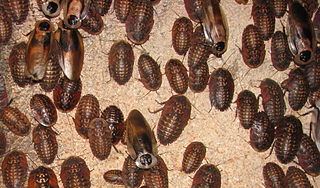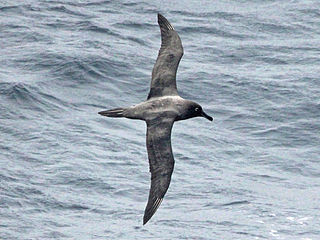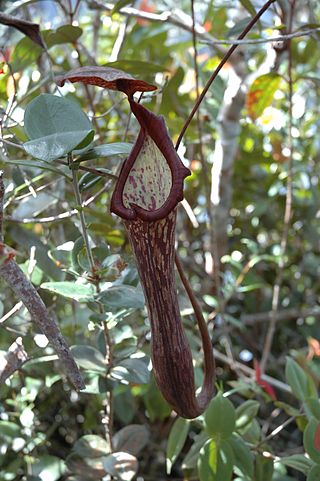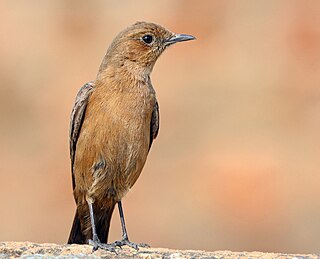
The plain prinia, also known as the plain wren-warbler or white-browed wren-warbler, is a small cisticolid warbler found in southeast Asia. It is a resident breeder from Pakistan and India to south China and southeast Asia. It was formerly included in the tawny-flanked prinia, resident in Africa south of the Sahara. The two are now usually considered to be separate species.

The white-throated kingfisher also known as the white-breasted kingfisher is a tree kingfisher, widely distributed in Asia from the Sinai east through the Indian subcontinent to China and Indonesia. This kingfisher is a resident over much of its range, although some populations may make short distance movements. It can often be found well away from water where it feeds on a wide range of prey that includes small reptiles, amphibians, crabs, small rodents and even birds. During the breeding season they call loudly in the mornings from prominent perches including the tops of buildings in urban areas or on wires.

The ruddy-breasted crake, or ruddy crake, is a waterbird in the rail and crake family Rallidae.

Giant cockroaches, or blaberids, are the second-largest cockroach family by number of species. Mostly distributed in warmer climates worldwide, this family is based on the American genus Blaberus, but much of the diversity is also found in Africa and Asia.

The sooty albatross, also known to sailors as the Quaker, is a species of marine bird belonging to the albatross family Diomedeidae. It is a medium-sized albatross that sports a sooty-brown or sooty-black color. It can be found in the southern Atlantic Ocean, the southern Indian Ocean, and the Southern Ocean. This bird scavenges for squid, fish, and carrion. Like other albatrosses, these birds mate for life and return to the same breeding spots every season. A single pair will mate every other year on a variety of islands in the southern Atlantic Ocean and the southern Indian Ocean islands. This bird is an endangered species and conservation efforts are taking place.

Nepenthes fusca, or the dusky pitcher-plant, is a tropical pitcher plant endemic to Borneo. It is found throughout a wide altitudinal range and is almost always epiphytic in nature, primarily growing in mossy forest.

Nepenthes klossii is a tropical pitcher plant endemic to New Guinea.

Nepenthes faizaliana is a tropical pitcher plant endemic to the limestone cliffs of Gunung Mulu National Park in Sarawak, Borneo. It is thought to be most closely related to N. boschiana.

Nepenthes vogelii is a tropical pitcher plant endemic to Borneo. It is thought to be most closely related to N. fusca.
The Tasman starling was described in 1836 by John Gould as a species which occurred on both Norfolk Island and Lord Howe Island. In 1928 Australian ornithologist Gregory Mathews recognized that the plumage of the race from Lord Howe Island was much browner and more greyish than the plumage of the Norfolk Island race and split the species into two forms, the Norfolk starling, and the Lord Howe starling. Both subspecies are now extinct, thus so the species.

The brown rock chat or Indian chat is a bird species of the family Muscicapidae. It is found mainly in northern and central India. It is often found on old buildings and rocky areas. It resembles a female Indian robin but lacks the reddish vent and differs in posture and behaviour apart from being larger. In flight it bears some resemblance to thrushes and redstarts. It feeds on insects, captured mainly on the ground. It was formerly placed as the sole species in the genus Cercomela but is now included with the wheatears in the genus Oenanthe.
The dusky tube-nosed bat is a species of vesper bat in the family Vespertilionidae. It is found only in China.

The Perissommatidae are a family of flies (Diptera) that was proposed in 1962 by Donald Colless based on the species Perissomma fusca from Australia. The family now includes five extant species within the single genus Perissomma, four from Australia and one from Chile. The Perissommatidae are unusual as they appear to have four compound eyes. They have a small slender body less than 2 mm in length. Their wings are large in comparison to their bodies and subsequently their flight is weak. Preferring high-altitude forest environments, adults only fly in the winter. The larvae live in decaying leaf litter in wet sclerophyll or cool rain forests. Some species are suspected to be associated with fungi. In the case of Perissomma macalpinei, numbers of adults have been observed congregating in clumps of foliage and rising in short, zigzag flights in the sunlight above the foliage for short periods before descending.

Cilix glaucata, the Chinese character, is a moth of the family Drepanidae. It was first described by the Italian physician and naturalist, Giovanni Antonio Scopoli in his 1763 Entomologia Carniolica. It is found in Europe, Asia Minor and North Africa.
Agriomorpha is a genus of insects in the damselfly suborder Zygoptera, family Rhipidolestidae.

Sympecma fusca, the common winter damselfly, is a damselfly a member of the Lestidae and related to the emeralds or spreadwings.

Arcyptera fusca, the large banded grasshopper, is a species of 'short-horned grasshoppers' belonging to the family Acrididae subfamily Gomphocerinae.

Camponotus japonicus, commonly known as the Japanese carpenter ant, is a species of ant native to eastern Asia. It is black, and one of the largest ants. A nest has about ten to thousands of individuals, and it can be a pest when it enters households or protects aphids. There are several subspecies of this ant in different areas of Asia, with the largest of the species being located in northern China.

Locheutis fusca is a moth of the family Oecophoridae. This species was discovered on 16 January 1930 by Alfred Philpott in the Tongariro National Park. L. fusca was described by him later in that same year. It is endemic to New Zealand.

Scytodes fusca, the brown spitting spider, is a species of spitting spider in the family Scytodidae. It is found in Central and Southern America, has been introduced into Europe, tropical Africa, Seychelles, Myanmar, China, Japan, and Hawaii.
















